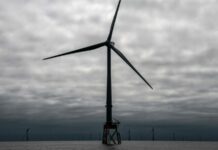
[miningmx.com] — The quality and quantity of South Africa’s coal reserves were steadily declining and mining the commodity was becoming harder, Deputy Minister for Mineral Resources Godfrey Oliphant said on Wednesday.
This was crucial because the country’s energy utilities were likely to rely on coal for the next few decades, he said at the 15th Annual Coal Indaba in Johannesburg.
Thick coal seams in reserves meant extraction of coal would be harder and more costly.
“The main field of Witbank and Highveld still contain significant reserves. On the other hand, the Waterberg coalfield in the Limpopo province is largely untapped and has been touted as the next major coalfield to be exploited,” he said, according to a copy of his speech.
“But there are challenges. The Waterberg fields have thick coal seams and are embedded in siltstones and shales. This means that the extraction will be harder and require more input costs than in other fields,” he said.
The cost was high, R300 per tonne which was double the R150 per tonne industry standard.
A further problem with the Waterberg site was its location. It was far from industrial areas, had poor infrastructure, limited transportation facilities, and a shortage of water, which was needed in the treatment of coal.
Coal accounts for 70% of the country’s primary energy consumption, 93% of electricity generation and 30% of petroleum liquid fuels.
The country is ranked 7th worldwide in terms of coal production, behind China, the US, India and Australia.
Last year, the country produced 250 million tonnes of coal, of which 75% was sold locally, the remainder exported.
Of the coal sold locally, about 64% was used in electricity generation, 18% in synthetic fuels and the rest sold to processing industries, mining and merchants.
The export market generates just over R30bn in foreign exchange earnings.
In the past few years, he said growth in electricity demand in line with economic growth had eroded Eskom’s generation reserves, resulting in a shortfall of coal supply.
“This has been compounded by the global increase in demand for coal, with countries such as India and China showing so much interest in South African Coal,” said Olifant.
Historically, the lower-grade coal was sold to Eskom for electricity generation, but Eskom now faced the threat of this low-grade coal being sold to India and China.
For many local coal producing companies it was more lucrative to sell on the export market than to Eskom. The power utility’s build programme would result in increased coal consumption.
“Despite SA’s economy being so heavily reliant on coal for power generation, there is no explicit policy that regulates the coal industry. The department will be looking in the coming months into amendments of the principal act,” he told researchers and experts at the indaba.
“While we welcome the role companies play in the markets… this cannot be at the expense of providing the country with a stable supply of coal to meet its energy and therefore growth imperatives.”











